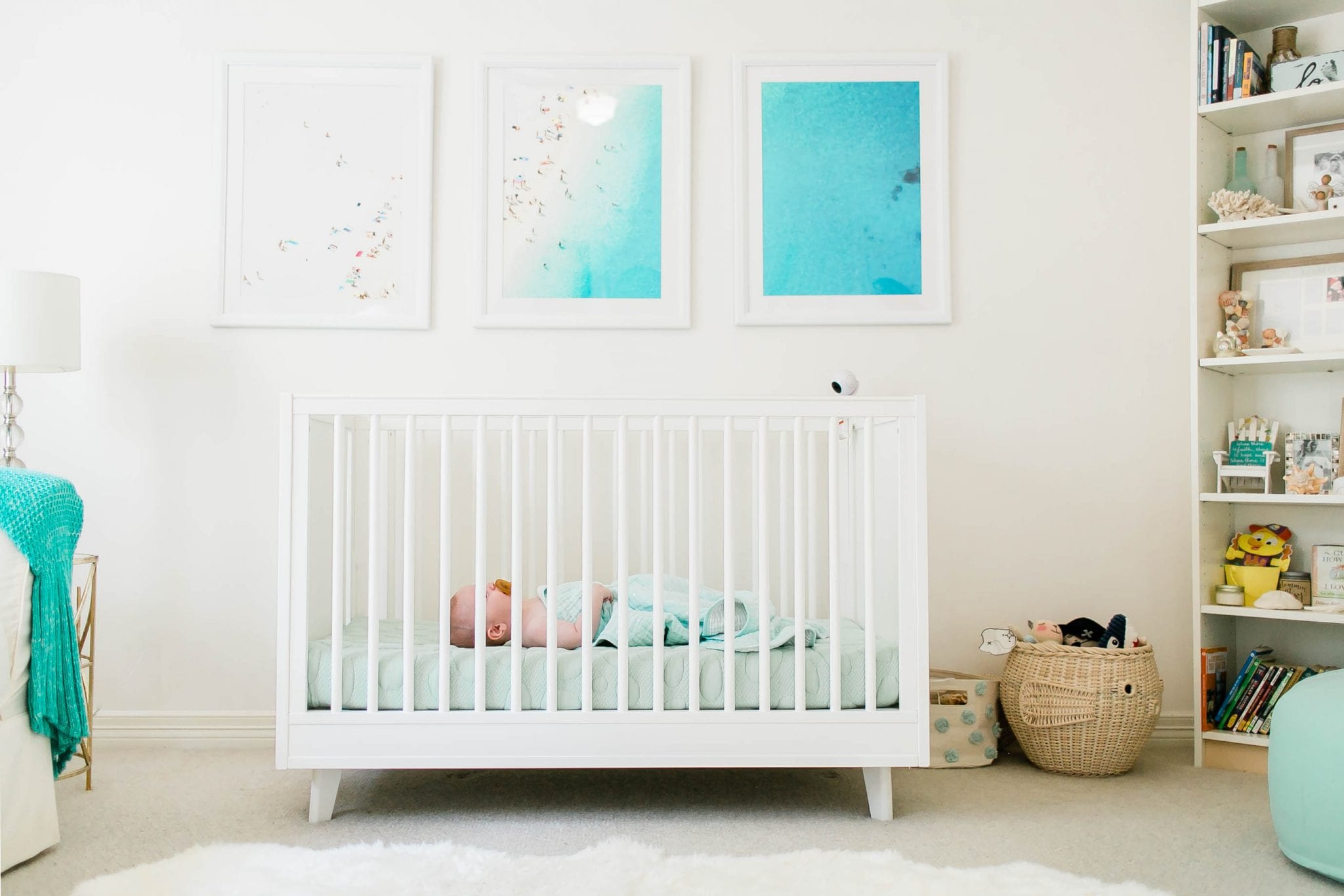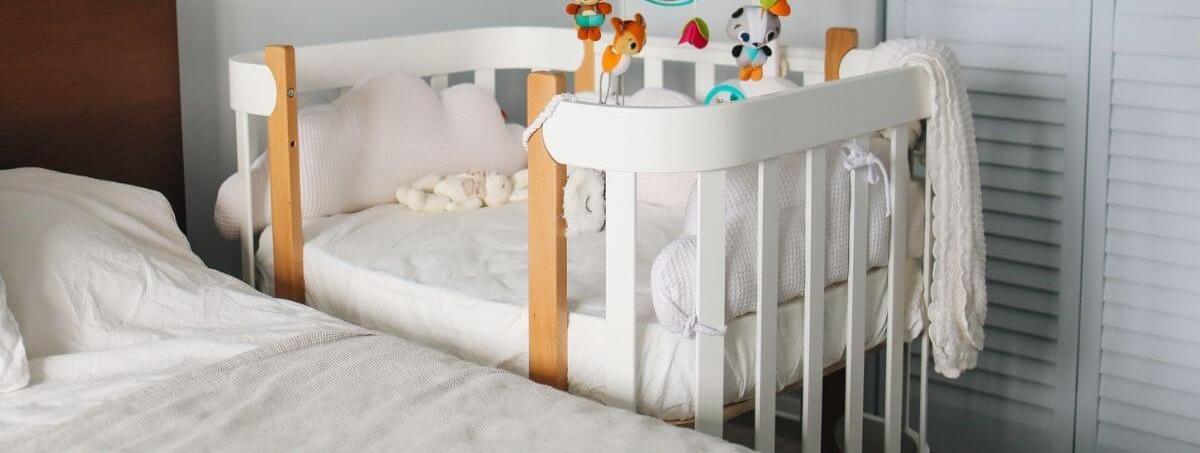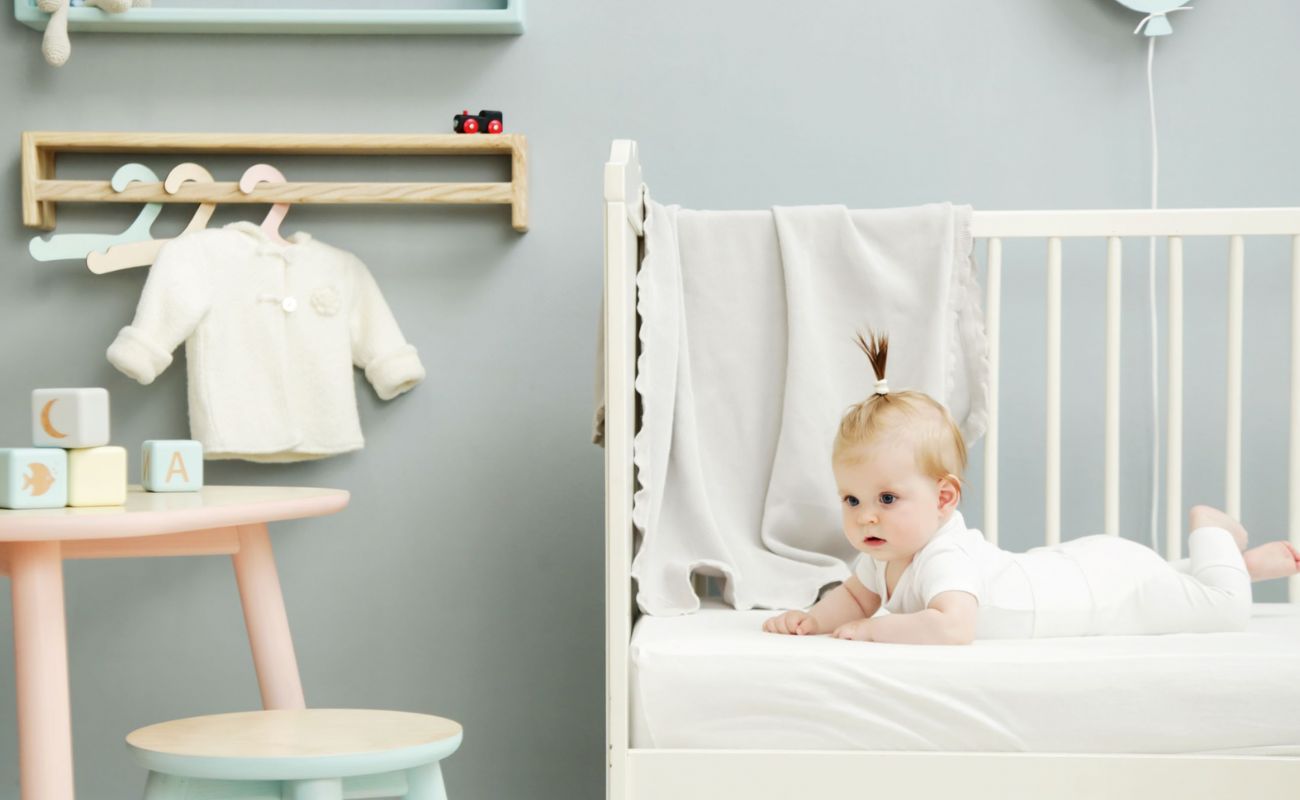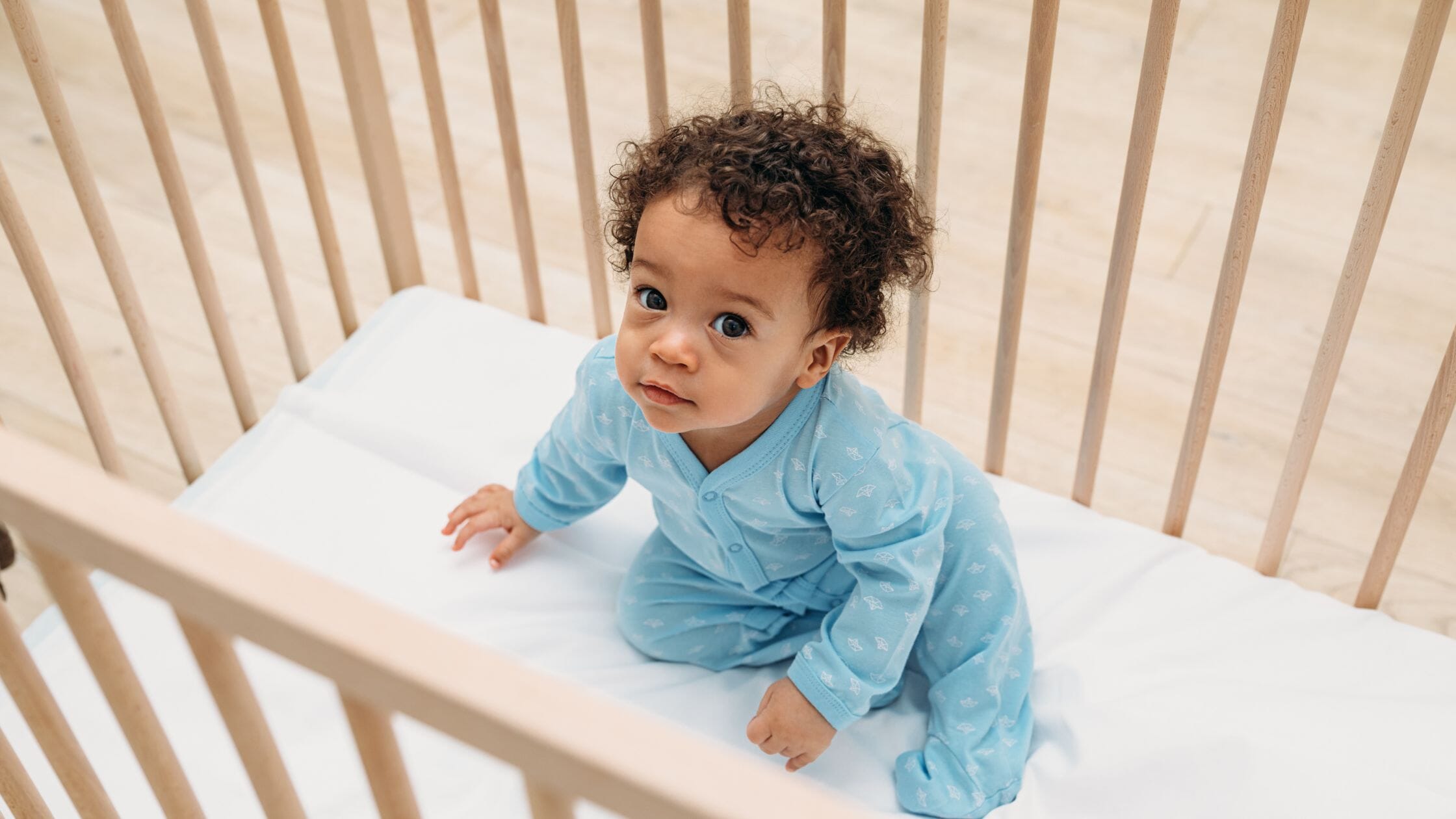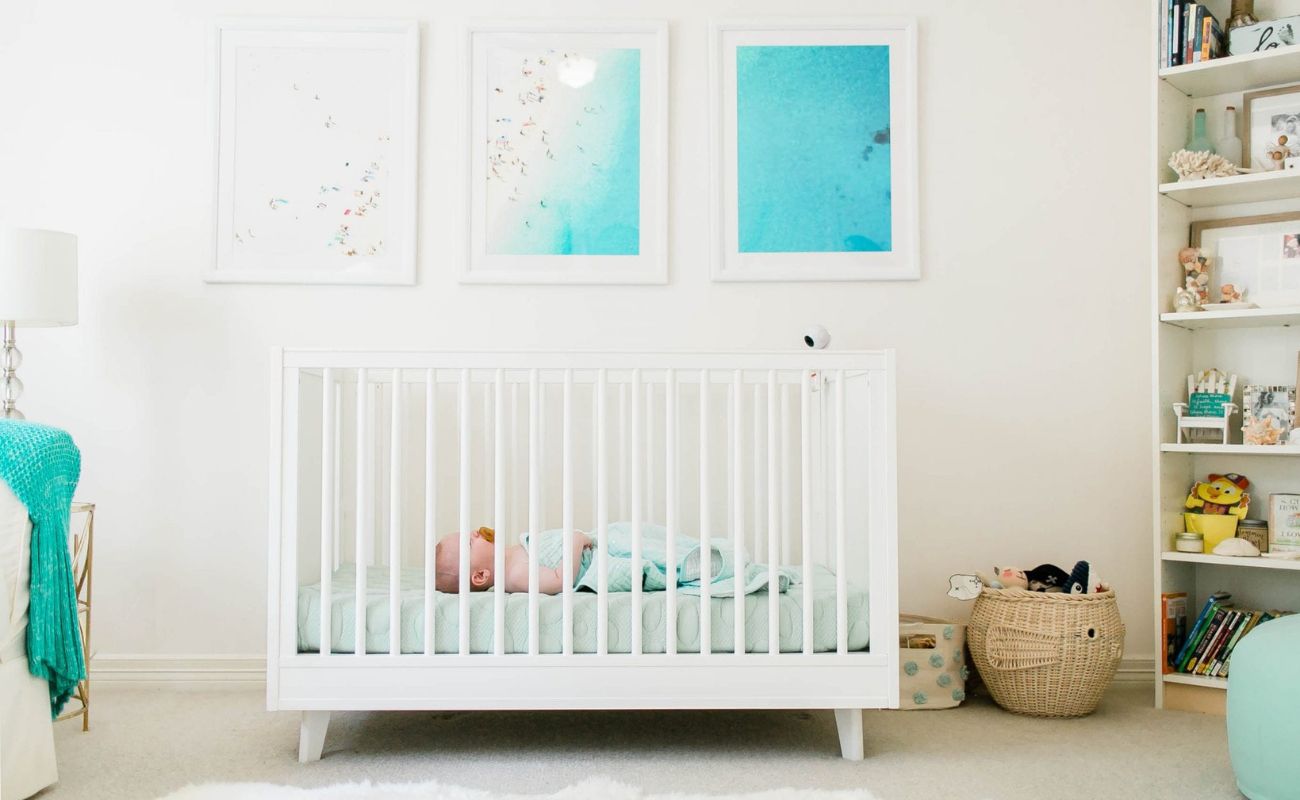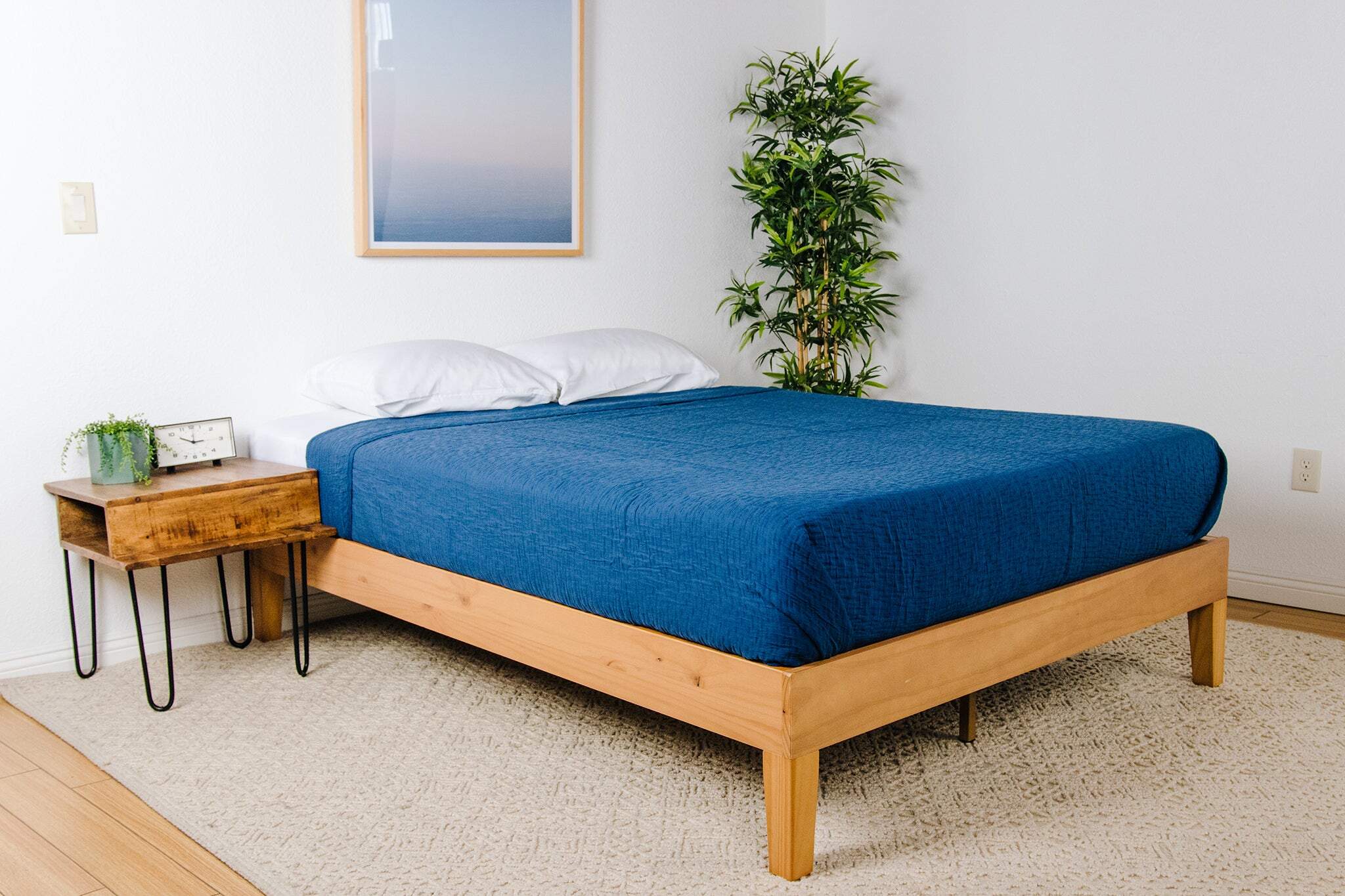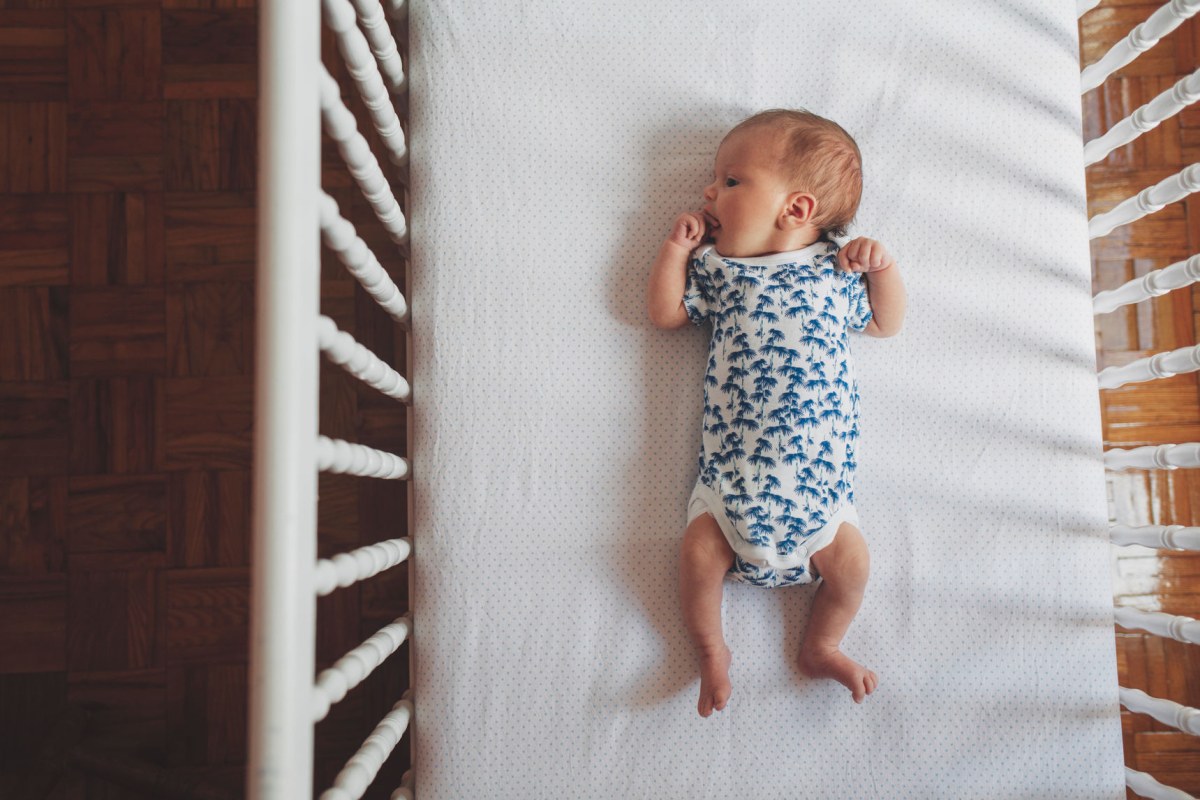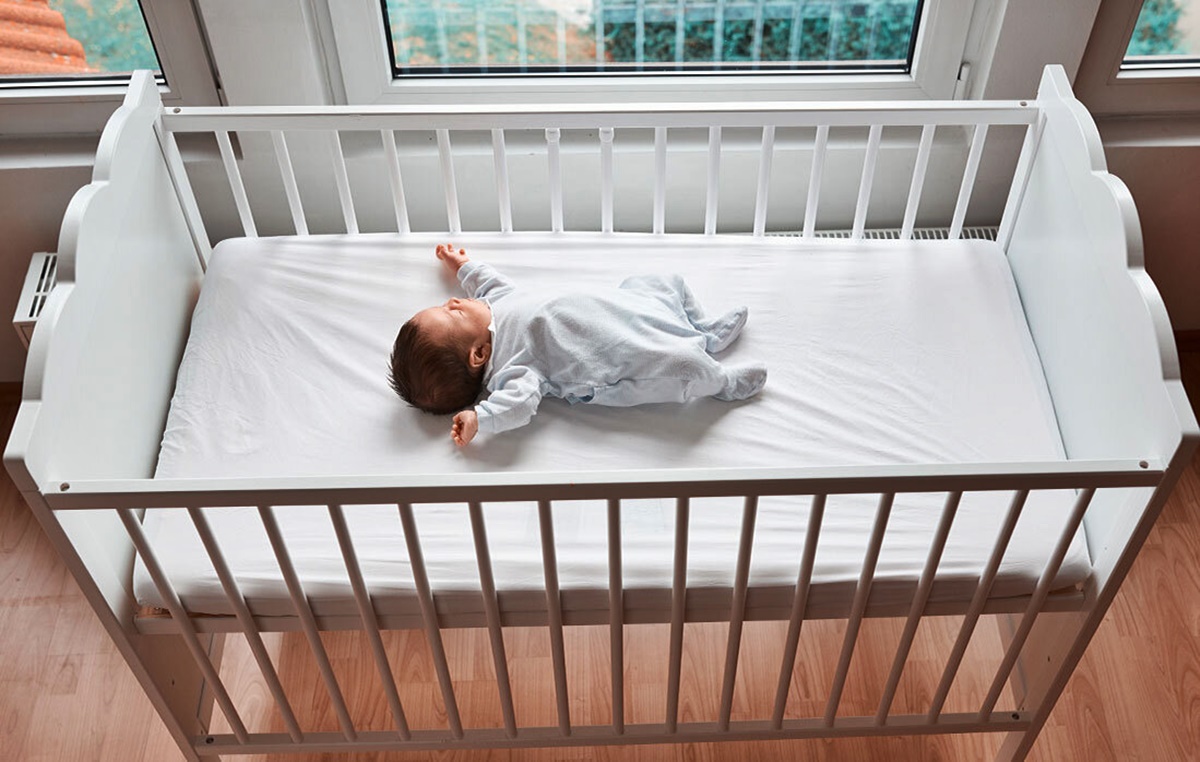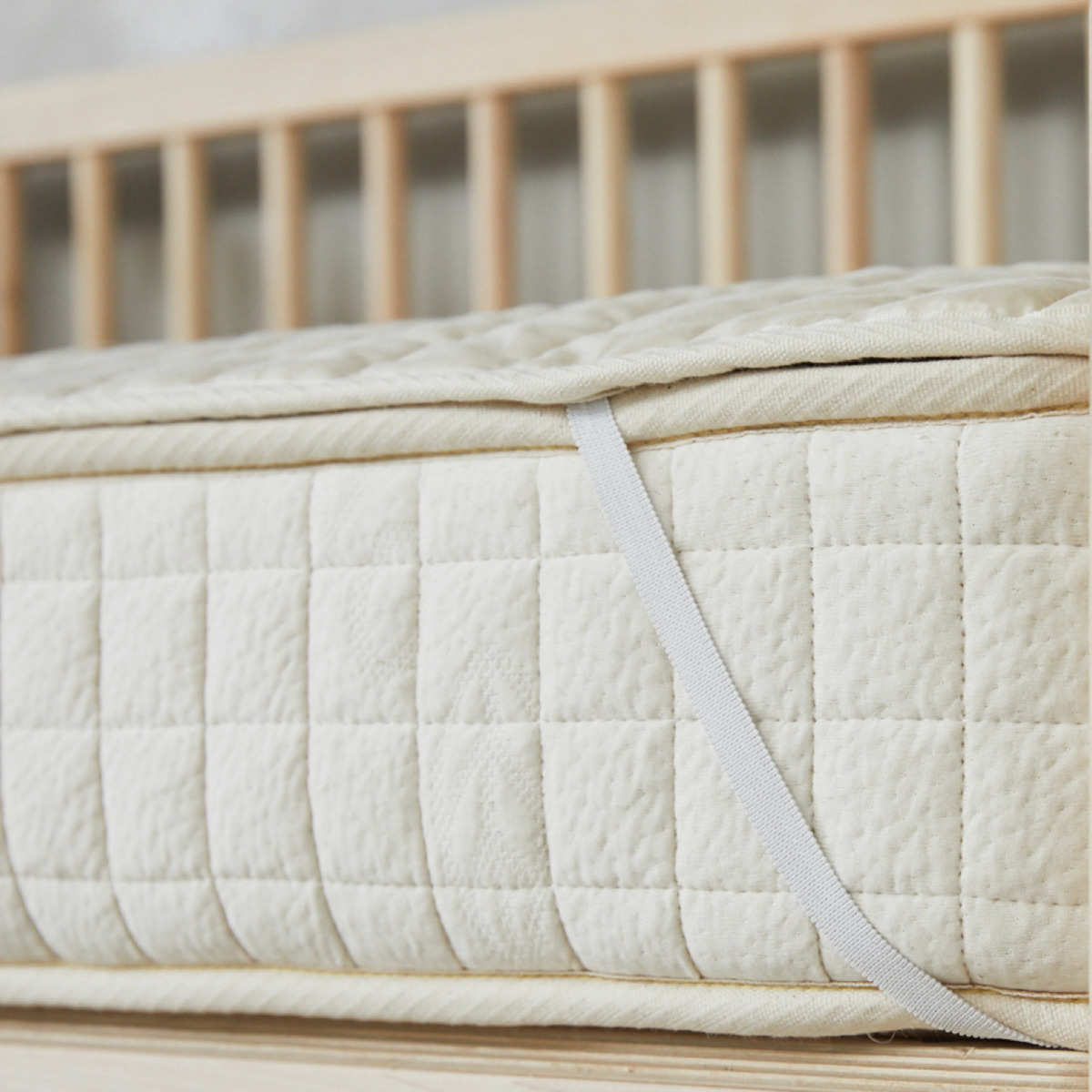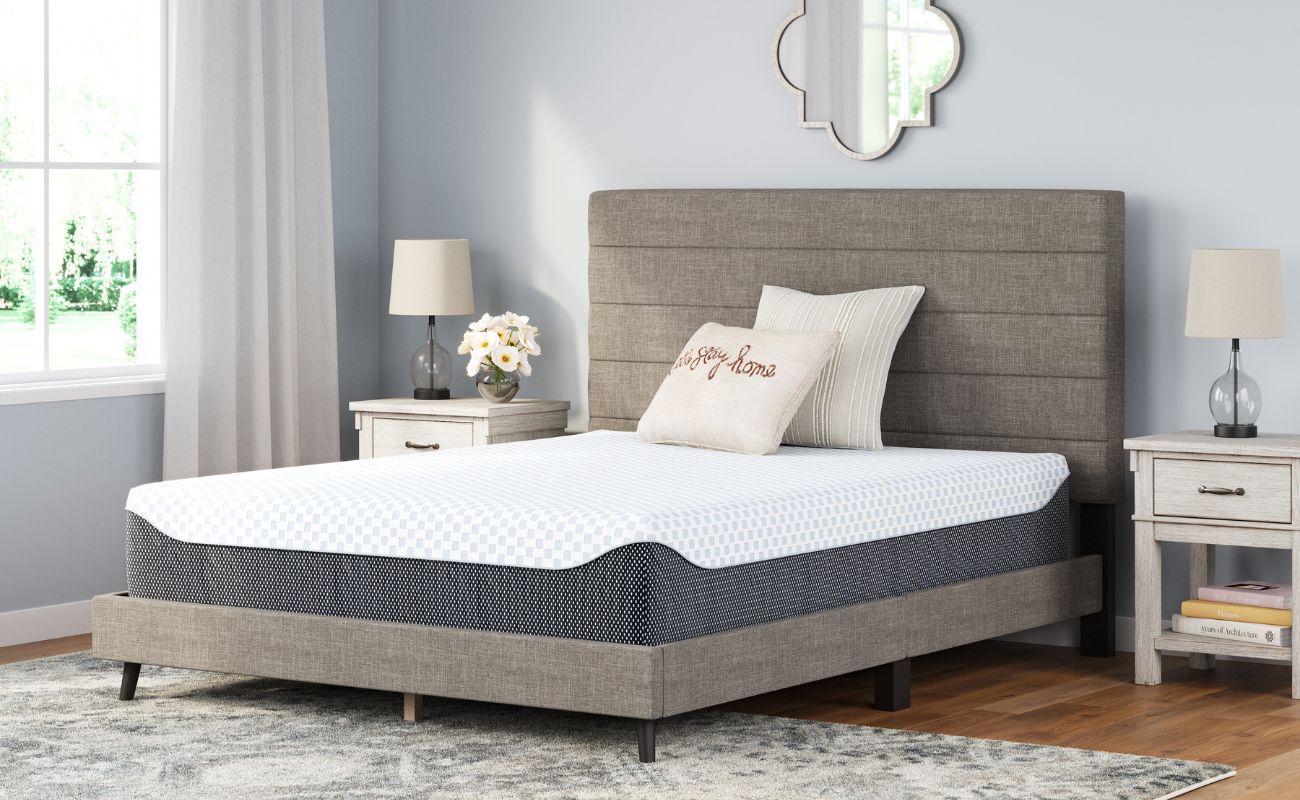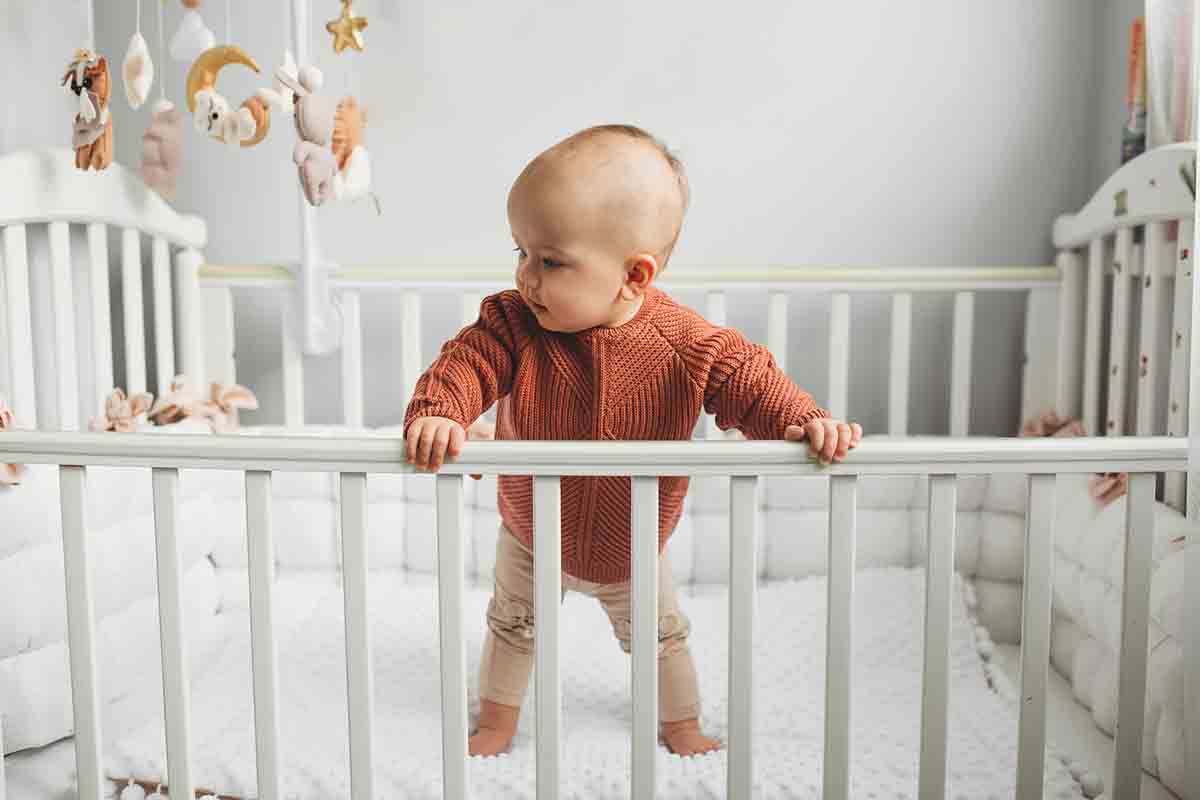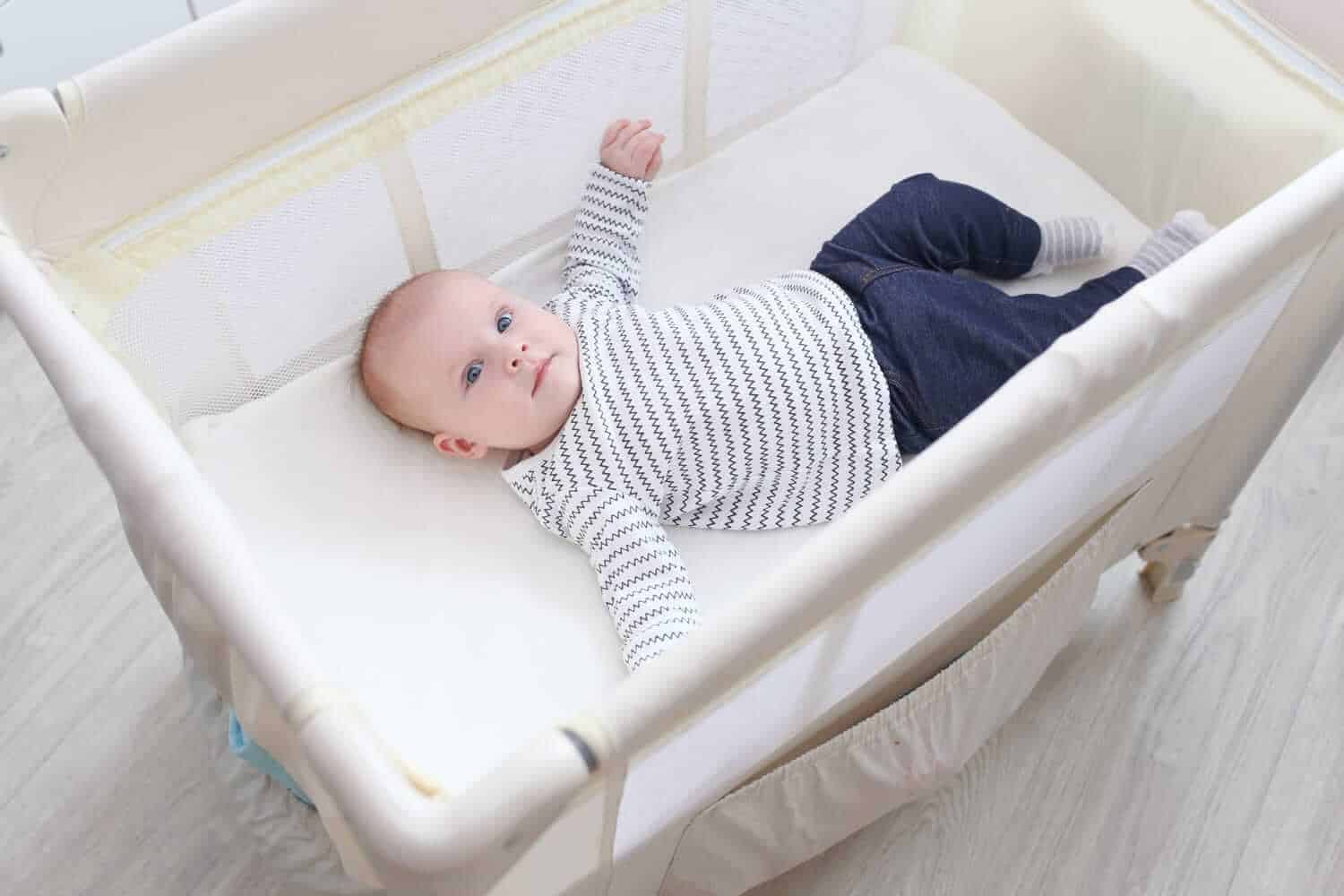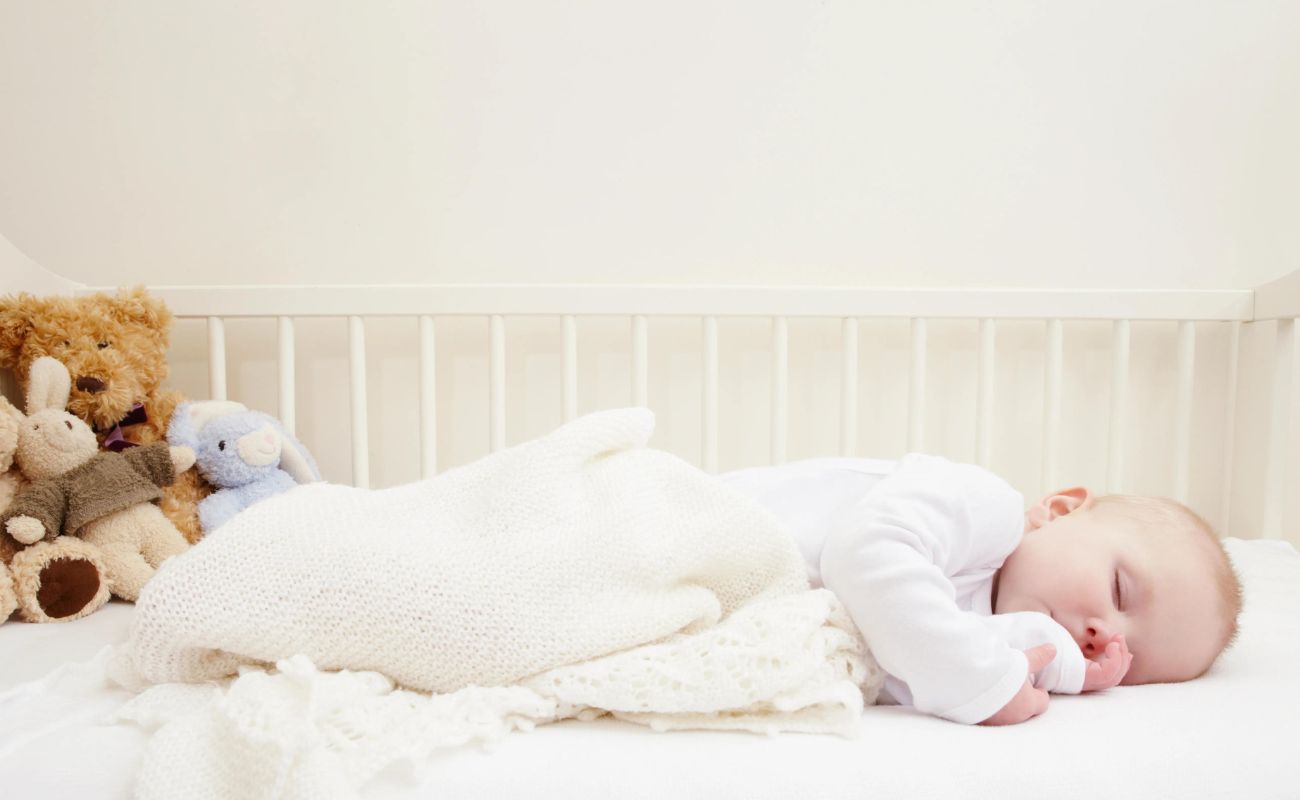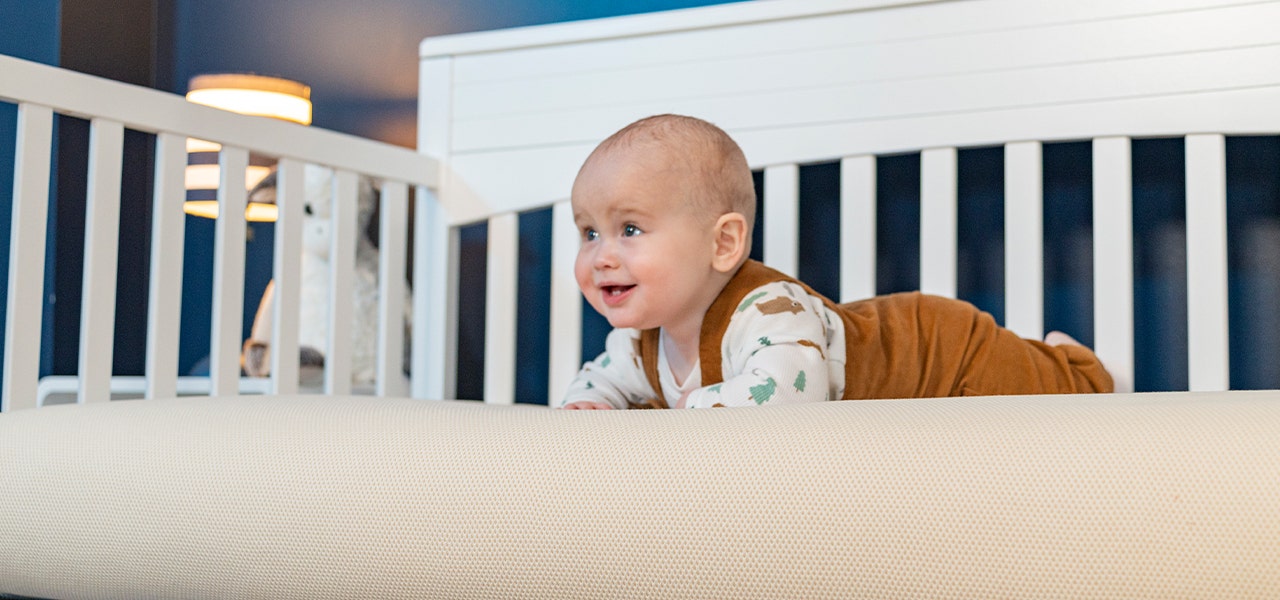Home>Furniture>Bedroom Furniture>How To Raise A Crib Mattress
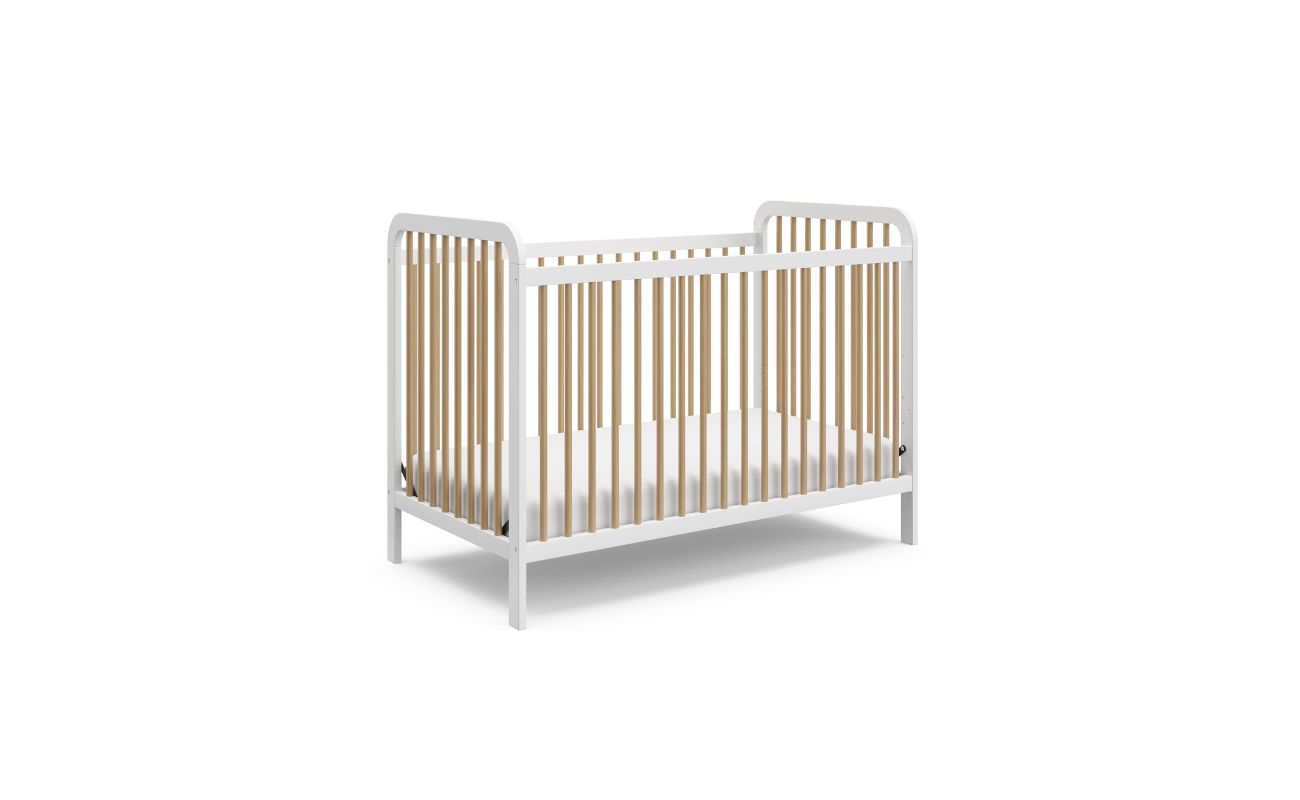

Bedroom Furniture
How To Raise A Crib Mattress
Modified: February 25, 2024
Discover the best ways to raise a crib mattress for optimal comfort and safety. Explore our selection of high-quality bedroom furniture for your little one's nursery.
(Many of the links in this article redirect to a specific reviewed product. Your purchase of these products through affiliate links helps to generate commission for Storables.com, at no extra cost. Learn more)
Introduction
Welcome to our comprehensive guide on how to raise a crib mattress! As your little one grows, you may find the need to adjust the height of the crib mattress to ensure their safety and comfort. Raising the crib mattress can help prevent your baby from climbing out of the crib or accidental falls.
In this article, we will walk you through the step-by-step process of raising a crib mattress. We will discuss how to choose the right crib mattress, prepare the crib, adjust the mattress height, secure the mattress, and test the height to ensure a safe sleeping environment for your precious little one.
With the right tools and a little know-how, you can easily make adjustments to your baby’s crib to accommodate their growing needs. So without further ado, let’s get started on creating a safe and cozy sleeping space for your little bundle of joy!
Key Takeaways:
- Ensure your baby’s safety and comfort by choosing the right crib mattress, preparing the crib, and securing the mattress in place. Regularly assess and adjust the mattress height as your baby grows to create a secure and cozy sleep environment.
- Prioritize safety and peace of mind by following the step-by-step process of raising a crib mattress. From choosing the right mattress to testing the height, create a nurturing space for your little one to thrive.
Read more: How Wide Is A Crib Mattress
Step 1: Choosing the Right Crib Mattress
When it comes to raising a crib mattress, the first and most important step is to choose the right mattress. Here are a few key factors to consider:
- Safety: Ensure that the mattress meets the safety standards set by the Consumer Product Safety Commission (CPSC). Look for certifications such as ASTM International or Juvenile Products Manufacturers Association (JPMA) to ensure the mattress is free from harmful chemicals and materials.
- Size: Measure the dimensions of your crib and choose a mattress that fits snugly. The mattress should not leave gaps between the edges and the crib walls, which could pose a safety hazard. A standard crib mattress typically measures around 28 inches by 52 inches.
- Firmness: Opt for a firm mattress that provides proper support for your baby’s developing spine. Soft or plush mattresses may increase the risk of suffocation or Sudden Infant Death Syndrome (SIDS). Press your palm on the mattress surface – it should bounce back immediately.
- Waterproof: Babies are prone to accidents and spills, so it’s wise to choose a mattress with a waterproof or water-resistant cover. This will make cleaning up any messes a breeze and prevent the growth of mold or bacteria.
- Breathability: Look for a mattress with good breathability to promote air circulation. This helps regulate your baby’s body temperature and reduces the risk of overheating. Choose a mattress with breathable materials, such as organic cotton or mesh panels.
Before purchasing a crib mattress, read customer reviews, compare different brands, and consider your baby’s specific needs. Remember, investing in a high-quality crib mattress is crucial as your baby will spend a significant amount of time sleeping and resting on it.
Step 2: Preparing the Crib
Once you have chosen the right crib mattress, it’s time to prepare the crib for the mattress elevation. Follow these steps to ensure a safe and secure setup:
- Clean and inspect the crib: Thoroughly clean the crib, removing any dust, dirt, or debris. Check for any loose or damaged parts, sharp edges, or splinters. Repair or replace any faulty components to ensure the crib is in good condition.
- Remove any bedding and toys: Remove all bedding, including blankets, pillows, stuffed animals, and crib bumpers. These items pose suffocation hazards to infants and should be kept out of the crib while the mattress is being raised.
- Adjust the crib to the lowest setting: Lower the crib mattress to the lowest setting. This will give you more room to work with when raising the mattress to the desired height later on.
- Use a crib rail cover: If your crib has rails, consider using a crib rail cover. This can protect your baby’s teeth and hands from getting stuck in the gaps between the rails. It also adds an extra layer of cushioning and safety to the crib.
- Secure any loose parts: Check for any loose screws, brackets, or fasteners in the crib. Tighten them properly to ensure the crib remains stable and secure. Loose parts can result in a wobbly crib, which is a safety concern.
By taking the time to properly prepare the crib, you create a safe and comfortable environment for your baby. Ensuring the crib is clean, free from potential hazards, and structurally sound is essential for a successful mattress elevation process.
Step 3: Adjusting the Mattress Height
Now that the crib is prepared, it’s time to adjust the mattress height to the desired level. Follow these steps to ensure a secure and comfortable setup:
- Refer to the crib’s instructions: Consult the manufacturer’s instructions that came with your crib. They will provide guidance on how to adjust the mattress height and any specific guidelines for your particular crib model.
- Identify the mattress support system: Take note of the mattress support system in your crib. It could be a system of metal springs, wooden slats, or an adjustable metal frame. Understanding how the mattress is supported will help you make the necessary adjustments.
- Remove the mattress: Take the crib mattress out of the crib temporarily. This will give you easier access to adjust the mattress support system to the desired height.
- Adjust the mattress support system: Depending on your crib’s design, there may be different settings or slots to adjust the mattress height. Set the mattress support system to the appropriate position that aligns with your desired mattress elevation.
- Reinsert the mattress: Once you have adjusted the mattress support system, carefully place the crib mattress back into the crib. Ensure that it sits securely on the support system and aligns with the crib walls.
It’s important to follow the manufacturer’s instructions and guidelines when adjusting the mattress height. This will help maintain the crib’s stability and ensure a safe sleeping environment for your baby. Remember to check that the mattress sits flat and level, without any tilting or gaps, to prevent accidents or discomfort.
When raising a crib mattress, make sure to use a firm and stable support to elevate one end of the mattress. This can help with issues such as reflux or congestion in infants. Always follow safety guidelines and consult with a pediatrician if you have any concerns.
Step 4: Securing the Mattress
Once you have adjusted the mattress height to the desired level, it’s crucial to secure the mattress in place to ensure your baby’s safety. Follow these steps to properly secure the mattress in the crib:
- Check for secure fit: Make sure the crib mattress fits snugly within the crib without any gaps between the mattress and the crib walls. Tighten any adjustable screws or brackets to ensure a secure fit.
- Use mattress fasteners or straps: Some cribs come with built-in fasteners or straps designed to hold the mattress securely in place. If your crib has these features, utilize them to keep the mattress from shifting or sliding.
- Consider using gripper pads: Gripper pads can be placed between the crib base and the mattress, providing extra traction and preventing the mattress from sliding around. Ensure the gripper pads are non-slip and securely placed.
- Double-check the corners: Pay attention to the corners of the crib mattress. Ensure they fit snugly into the corners of the crib frame to prevent any gaps that could pose a safety hazard.
- Avoid excessive bedding: While securing the mattress, be mindful of the amount of bedding you use. Avoid excessive layers of bedding, as they can affect the fit of the mattress and compromise your baby’s safety.
By taking the time to secure the crib mattress properly, you provide a stable and secure sleeping surface for your baby. This ensures that the mattress remains in place, reducing the risk of accidental falls or entrapment.
Read more: How To Pick A Crib Mattress
Step 5: Testing the Mattress Height
After raising the crib mattress and securing it in place, it’s important to test the height to ensure your baby’s safety. Follow these steps to confirm that the mattress height is appropriate:
- Perform a visual inspection: Stand back and visually inspect the crib from different angles. Ensure that the mattress is at a safe height that will prevent your baby from climbing out of the crib when they become more active and mobile.
- Consider your baby’s age and abilities: Assess your baby’s age and developmental stage. If your little one is starting to pull themselves up or stand, you may need to raise the mattress higher to prevent them from toppling over the crib railings.
- Check for any gaps: Carefully run your hand along the sides of the crib, checking for any gaps between the mattress and the crib. There should be no spaces where your baby’s body or limbs could get trapped or wedged.
- Observe your baby’s behavior: Monitor your baby’s behavior when they are in the crib. If they seem uncomfortable or restless, it may indicate that the mattress height needs to be adjusted to enhance their comfort and safety.
- Seek professional advice if needed: If you have any doubts or concerns about the mattress height, consult your pediatrician or a child safety expert for guidance. They can provide personalized advice based on your baby’s specific needs.
Regularly assess and adjust the crib mattress height as your baby grows. Remember that every child is unique, and their developmental milestones may vary. It’s essential to stay vigilant and adapt the crib mattress height accordingly to provide a secure and comfortable sleep environment for your growing baby.
Conclusion
Raising a crib mattress is an important step in creating a safe and comfortable sleeping environment for your baby. By following the steps outlined in this guide, you can ensure that your little one stays secure while they rest and grow.
Choosing the right crib mattress, preparing the crib, adjusting the mattress height, securing the mattress, and testing the height are all crucial steps in the process. Taking the time to carefully consider these factors will help prevent accidents, promote healthy sleep, and provide peace of mind for parents.
Remember, always prioritize safety when it comes to your baby’s sleep environment. Ensure that the crib mattress meets safety standards, eliminate potential hazards, and regularly inspect and adjust the mattress as your baby grows and develops.
As your little one continues to reach new milestones, such as rolling over, sitting up, or starting to stand, it’s important to reassess the crib mattress height to ensure it remains appropriate for their safety.
By following these steps and staying proactive, you can maintain a secure sleeping space for your baby throughout their early years. Creating a safe and comfortable crib environment fosters healthy sleep habits and provides a nurturing space for your little one to thrive.
Remember, the well-being of your baby is paramount, and taking the necessary precautions to ensure their safety is essential. So go ahead and raise that crib mattress with confidence, knowing that you are providing the best environment for your little one to dream, grow, and explore!
Frequently Asked Questions about How To Raise A Crib Mattress
Was this page helpful?
At Storables.com, we guarantee accurate and reliable information. Our content, validated by Expert Board Contributors, is crafted following stringent Editorial Policies. We're committed to providing you with well-researched, expert-backed insights for all your informational needs.
